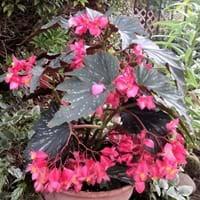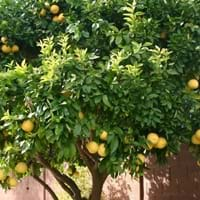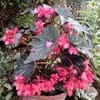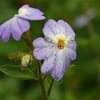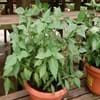Life Span
Perennial
Perennial
Type
Tender Perennial
Fruit
Origin
South America, Brazil
South Asia, Southeast Asia
Types
Begonia grandis, Begonia obliqua
Not Available
Number of Varieties
Not Available
Habitat
Cold Regions, subtropical regions
Mediterranean region
USDA Hardiness Zone
10-15
8-10
AHS Heat Zone
12-1
Not Available
Sunset Zone
H1, H2, 23, 24
Not Available
Habit
Upright/Erect
Spreading
Flower Color
Red, Coral
White
Flower Color Modifier
Bicolor
Bicolor
Fruit Color
Tan
Green, Lemon yellow, Yellow
Leaf Color in Spring
Green
Green
Leaf Color in Summer
Green
Green
Leaf Color in Fall
Green
Dark Green
Leaf Color in Winter
Light Green
Dark Green
Leaf Shape
Wing shaped
Ovate
Plant Season
Spring, Summer, Fall, Winter
All year
Sunlight
Full Sun, Partial Sun, Partial shade
Full Sun
Growth Rate
Medium
Medium
Type of Soil
Loam, Sand
Rich
The pH of Soil
Acidic, Neutral
Acidic
Soil Drainage
Well drained
Well drained
Bloom Time
Indeterminate
Spring, Summer
Tolerances
Drought
Full Sun
Where to Plant?
Container, Ground
Container, Ground
How to Plant?
Cuttings
Divison, Seedlings
Plant Maintenance
Medium
High
Watering Requirements
Average Water Needs, Do Not over Water, Requires regular watering
Reduce watering once fruit are growing, Water daily during growing season
In Summer
Lots of watering
Lots of watering
In Spring
Moderate
Moderate
In Winter
Average Water
Average Water
Soil pH
Acidic, Neutral
Acidic
Soil Type
Loam, Sand
Rich
Soil Drainage Capacity
Well drained
Well drained
Sun Exposure
Full Sun, Partial Sun, Partial shade
Full Sun
Pruning
Pinch Tips, Pruning will encourage new growth, Remove damaged leaves, Remove dead branches, Remove dead leaves
Prune to control growth, Remove dead branches
Fertilizers
fertilize in fall, fertilize in spring, High potassium diluted feed of 5-10-5
Fertilize in early to mid-summer, for fruiting plants, use high phosphorous content fertilizer
Pests and Diseases
Red blotch
Aphids, Citrus foot rot, Citrus gummosis, Citrus leaf miner, Red blotch
Plant Tolerance
Drought
Full Sun
Flower Petal Number
Single
Double, Semi-Double
Foliage Texture
Coarse
Coarse
Foliage Sheen
Matte
Glossy
Attracts
pollinators, Whiteflies, Wildlife
Ants, Birds
Allergy
Not Available
Anaphylaxis, Cough, Nausea, Rhinitis, Stomach pain, Swelling, Urticaria, Vomiting, wheezing
Aesthetic Uses
Showy Purposes
Farmland, Showy Purposes
Beauty Benefits
Not Available
Acne, Good for skin, Good for the Scalp, Improve skin tone, Moisturizing, Strong, beautiful hair
Edible Uses
Insignificant
Yes
Environmental Uses
Air purification
Food for animals, Very little waste
Medicinal Uses
Conjuctivitis, Headache, Mouth Sores, Sore Eyes, Sore throat, Treatment of ulcers
anti-cancer, constipation, Digestive, Gastrointestinal disorders, Gout, Immunity, Jaundice, Respiratory Disorders, Rheumatoid arthritis, scurvy, Ulcers, Urinary problems, Weight loss
Part of Plant Used
Flowers, Leaves, Root
Fruits
Other Uses
Container, Used for its medicinal properties
Cosmetics, Used as a flavouring in food, Used As Food, Used for its medicinal properties
Used As Indoor Plant
Yes
No
Used As Outdoor Plant
Yes
Yes
Garden Design
Container, Feature Plant, Houseplant, Mixed Border, Tropical
Edible, Fruit Tree, Tropical
Botanical Name
BEGONIA coccinea
Citrus limetta
Common Name
Angel Wing Begonia
sweet lime, sweet lemon, sweet limetta
In Hindi
Angel wing begonia plant
मौसम्बी
In German
Engel Flügel Begonie Pflanze
süße Limone
In French
Ange aile plante bégonia
Citrus limetta
In Spanish
Ángel planta de begonia ala
limetta dulce, limón dulce mediterráneo, limón dulce y lima dulce
In Greek
Άγγελος φυτού Begonia πτέρυγα
γλυκό ασβέστη
In Portuguese
Anjo planta Begónia da asa
doce de limão
In Polish
Anioł skrzydło begonia roślin
słodkie limonki
In Latin
Angelus pars plantae Begonia
dulcis ad cinerem
Phylum
Magnoliophyta
Magnoliophyta
Class
Magnoliopsida
Magnoliopsida
Order
Violales
Sapindales
Family
Begoniaceae
Rutaceae
Clade
Angiosperms, Eudicots, Rosids
Not Available
Tribe
Not Available
Citreae
Subfamily
Caesalpinioideae
Citroideae
Number of Species
Not Available
Season and Care of Angel Wing Begonia and Sweet Lime
Season and care of Angel Wing Begonia and Sweet Lime is important to know. While considering everything about Angel Wing Begonia and Sweet Lime Care, growing season is an essential factor. Angel Wing Begonia season is Spring, Summer, Fall and Winter and Sweet Lime season is Spring, Summer, Fall and Winter. The type of soil for Angel Wing Begonia is Loam, Sand and for Sweet Lime is Rich while the PH of soil for Angel Wing Begonia is Acidic, Neutral and for Sweet Lime is Acidic.
Angel Wing Begonia and Sweet Lime Physical Information
Angel Wing Begonia and Sweet Lime physical information is very important for comparison. Angel Wing Begonia height is 45.72 cm and width 45.72 cm whereas Sweet Lime height is 800.00 cm and width 600.00 cm. The color specification of Angel Wing Begonia and Sweet Lime are as follows:
Angel Wing Begonia flower color: Red and Coral
Angel Wing Begonia leaf color: Green
Sweet Lime flower color: White
- Sweet Lime leaf color: Green
Care of Angel Wing Begonia and Sweet Lime
Care of Angel Wing Begonia and Sweet Lime include pruning, fertilizers, watering etc. Angel Wing Begonia pruning is done Pinch Tips, Pruning will encourage new growth, Remove damaged leaves, Remove dead branches and Remove dead leaves and Sweet Lime pruning is done Prune to control growth and Remove dead branches. In summer Angel Wing Begonia needs Lots of watering and in winter, it needs Average Water. Whereas, in summer Sweet Lime needs Lots of watering and in winter, it needs Average Water.
